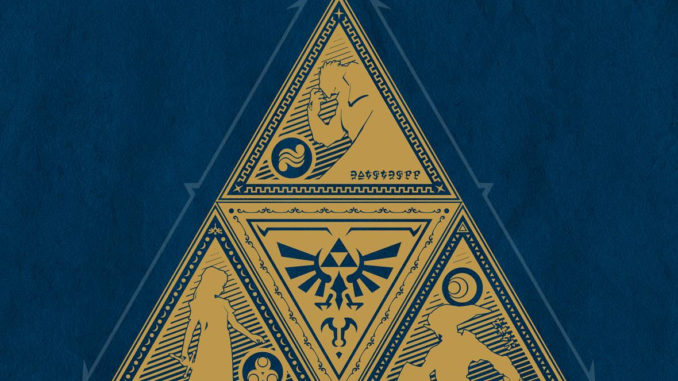
The Legend of Zelda is considered to be one of Nintendo’s most famous franchises and has a collection of video games that spans three decades, however, even with such popularity and longevity, there are some people that do not know much about the Zelda franchise. Enter Dark Horse Comics’ The Legend Of Zelda Encyclopedia. Each of its 330 pages has gorgeous artwork, detailed descriptions on the characters, mythology and monsters that fill the Zelda universe and easy and fun to read passages on both the modern and classic games, making sure that with each page, the reader is both informed and entertained.
The Legend of Zelda: Encyclopedia is split into three sections and it begins with the Historical Records, as it goes over the traditions, history and culture of Hyrule. The section goes over the creation of Hyrule by Din, Nayru and Farore, the three goddesses of Power, Wisdom and Courage, the creation of the Triforce along with its connection to the goddess Hylia and the biographies of Link, Princess Zelda and Ganondorf as well as their many incarnations throughout the games. The section also delves into the other realms such as the Dark World and Twilight Realm and even provides background information on the Master Sword and the different variations of the Hylian Shield.
Furthermore, for all those linguists out there, there is sub-section on the Hylian language and explains how to translate the various runes and signs in the games. The Historical Records is similar to a tour guide as the reader explores the rich Hylian mythology and culture.
The second section, “Database: An Alphabetical Archive of Information,” covers the towns, villages, items, dungeons, enemies and monsters found throughout the games. To reference another video game series, think of this section as a Pokédex, as you are able to find the items that Link used and the monsters that he fought in alphabetical order. You can also see the artistic evolution as how towns, villages, items, dungeons, enemies and monsters evolved from the 8-bit era to the HD graphics they are today.
Instead of focusing on the larger aspects such as the lifestyle and culture of Hyrule or towns and dungeons that Link visited throughout his journey, the third and final section, “Archives: Information and Notes on Each Game,†focuses on what made the Legend of Zelda, the video game juggernaut franchise it is today, the games themselves.
Throughout the section, there is the date of the release and re-release of each major game on both sides of the Pacific and what console the game was released in, a detailed description of the game’s plot, illustrations of the game’s main characters taken from the game’s manual itself, a chart that depicts the dynamic relationships between the characters and a map of the game’s world. However, if you are a hardcore Zelda fanatic and already knew all that, then there are the “development documents†and “developer’s notes,†where the writers of the encyclopedia include concept arts, draft artwork and sketches of characters and background trivia of the development of the games, such as, how the developers only had a year to work on Majora’s Mask, or how director David Lynch’s television series Twin Peaks influenced Link’s Awakening.
Whether you are a hardcore Zelda fan that has played every game in the franchise or someone who has just bought their first game, this encyclopedia is must own. With the exception of Breath of the Wild, the encyclopedia contains beautiful artwork, never before seen information and always has something to keep the reader interested. Whether you going down a trip on memory lane or a first time, instead of a sword, take this encyclopedia and go on an adventure of knowledge through Hyrule.


Leave a Reply